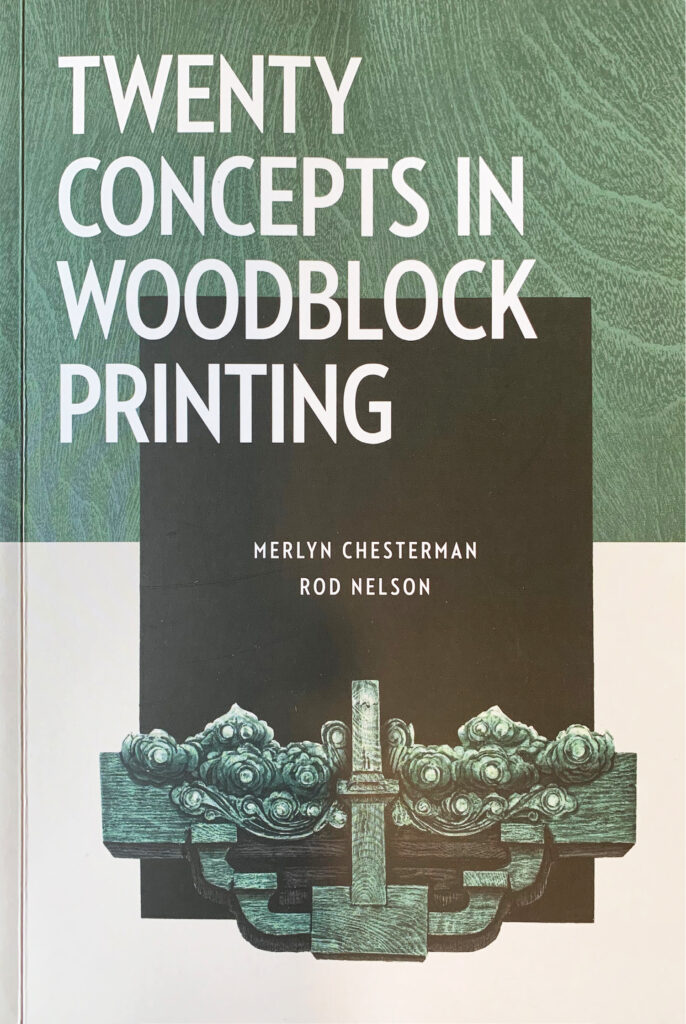by Merlyn Chesterman and Rod Nelson
A book review by Sarah Edmonds

Every creative should own this book.
Pour over stunning imagery captured in a slim, highly flickable format. This book is a visual treat, accompanied by a clever and curious narrative. Broken down into easy-to-dip-into chapters focusing on creative concepts, it’s pleasingly alphabeticalised from ‘Abstraction’ through to ‘Tradition’. Short introductions ask the reader to consider the basic principles of art theory…. while eagerly asking us to reject them. This is a good measure of the authors, who have a healthy balance of compliance and rebellion, reflected in their own artworks. Chesterman and Nelson are lifelong printmakers and polymaths, drawing on their experiences of living and working in the Far East, they bring a broad perspective to their writing.
Reading this book, I found myself having lots of ‘aha’ moments, learning things I didn’t know, revelling in the visual sketches, historical notes and richness of the narrative. It is peppered throughout with quotes, thoughtful insights and philosophical teachings. From Michelangelo to Anita Roddick, Goya and Da Vinci they’ve got it well and truly covered. With a foreword by Emma Stibborn RA and a review from Norman Ackroyd CBE RA, we know we’re in safe hands.
‘Don’t worry about what’s cool and what’s not cool. Authenticity is cool,’
Zak Posen
If you’re after a guide to printmaking, this isn’t it. It’s more a self-improvement guide for curious creatives (although it would never profess to be so) revisiting traditional concepts in a fresh and humorous way. If you enjoy delving, deep diving and learning, then it’s all here. We can roll around ideas surrounding authenticity, balance, colour, composition, dynamism, humour, memory, motif, quality, shape and symbolism, then take them with us into the studio to further percolate.

A recurring theme of the book is the artists sense of control …. and complete lack of it. It is this allusive balance we all chase, that is so hard to achieve. It is exactly the point at which control collides with alchemy where the magic happens – knowing how to harness it and when to let go is the real challenge. Chesterman points at taking creative risks throughout the book – in ‘Dazzle’ she confesses, ‘The make-or-break vertical scratches are the risk-taking element for me.
‘I’d rather lose half my prints to failure, than not dare.’
Sharing this do-or-dare moment with the reader makes us feel we’re not alone, ‘limitations themselves are the fountainhead of creativity.’ All artists have imposter syndrome, moments of doubt, bearing our precious paintings with a new audience requires a certain vulnerability. This book prescribes its patients in all sorts of ways, ‘the only remedy for fear is courage,’ and even an encouraging letter written directly to the reader implores, ‘equipped with a little knowledge, and a dash of bravado, you are the proud possessor of perhaps the most powerful toy in the box of tricks that this book is hoping to bring to your attention.’

The true artist: draws out all from his heart,
Works with delight, makes things with calm, with sagacity,
Works like a true craftsman, composes his objects, works dextrously, invents;
Arranges materials, adorns them, makes them adjust.
Aztec poem – from the Spanish translation of the Toltica Codica de la Real Academia,
Foli 315, by Elvira Abascal
There is no room for timidness in woodblock printmaking, ‘the process of cutting wood with a sharp tool is itself a strong statement, committing and physical.’ Woodblock print has a sense of total commitment, a sentiment that can be shared by every artist. Further advice follows in Concept 16 on ‘Quality’, ‘it’s always good to look at the work of other artists….the process of developing one’s own style is part osmosis, part pilfering. Originality will come along of its own accord. It may take time, but it will come.’
‘To achieve simplicity and combine it with eloquence can be one of the most elusive things in all of art,’
Merlyn Chesterman
